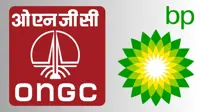Kelkar panel projects a gloomy picture of Indian economy
28 Sep 2012
The recent increase in government deficits which currently stands at 6.1 per cent of GDP, the investment decline, the rigidity of inflation, the pronounced decline in industrial production and the widening of the current account deficit are all pointers to a deepening fiscal crisis, the Kelkar Committee said in its report.
The Kelakar Committee report on fiscal consolidation estimates the country's current fiscal deficit to be around 6.1 per cent of the country's gross domestic product (GDP), far higher from the budget estimate of 5.1 per cent.
According to the committee, ''the Indian economy is poised on the edge of a fiscal precipice, making corrective measures aimed at speedy fiscal consolidation an imperative necessity if serious adverse consequences stemming from this situation are to be averted in an efficient and timely manner.''
Runaway fiscal deficits, leading to unsustainable levels of public debt, can cause diverse forms of macroeconomic imbalances varying with the means through which the deficit is financed, it said.
''High fiscal deficits tend to heighten inflation, reduce room for monetary policy stimulus, increase the risk of external sector imbalances and dampen private investment, growth and employment,'' the committee noted.
Also, the committee said the country's current account deficit was already high at 4.2 per cent of GDP in 2011-12 and could deteriorate further. Any failure to take immediate measures for correcting the current fiscal deficit will result in a sovereign credit downgrade and flight of foreign capital. This will invariably further weaken the rupee and negatively impact the capital markets and the banking sector, it said.
In addition, the situation leaves little headroom for counter-cyclical policy measures in the event of another global crisis, the committee observed.
The growing fiscal deficit also leaves limited monetary space for lowering interest rates to stimulate private investment and growth. In a country where millions of young, both skilled and unskilled, enter the labour force each year, a growth slowdown is inefficient, inequitable, and potentially politically destabilising. It is the poor and the unemployed who will suffer the most in the event of sluggish growth and consequent political instability.
According to the committee, the government failed to push forward the fiscal improvement from FY 2002-03 to 2007-08, which saw a rise in foreign reserves providing unprecedented import cover and global confidence.
This fiscal discipline fed into other economic variables in a positive manner. The aggregate disbursements of the central and state governments showed an increase in capital outlays from 11.87 per cent in 2002-03 to 18.59 per cent 2007-08 (as percentage of aggregate disbursements).
The lowering of the government's fiscal deficit (GFD) was accompanied by a benign inflationary environment, lower real interest rates and significant increase in private sector investment, it noted. However, the committee said global economic conditions also were favourable during this period.
According to the committee, the twin deficits hypothesis implies that, given a certain level of private savings, an increase in the government deficit will have to be balanced by either a reduction in private investment or an increase in the current account deficit (CAD.) The CAD then needs to be financed through external capital inflows, government external debt or drawdown of foreign exchange reserves. Government's funding of the deficit through domestic sources tends to be inflationary. Even when the government does not explicitly use seigniorage, if the central bank has to auction government bonds and have adequate takers it needs to create enough liquidity. The RBI indicates that it has been doing so in recent years.
This increase in liquidity can be inflationary, the committee said.
The rationale for a credible and effective fiscal consolidation in the current context is built on three main grounds:
- We are in a state of high fiscal stress, with a ''do-nothing'' approach likely to result in a central government fiscal deficit of 6.1 per cent of GDP in the current year 2012-13; this could result from a likely shortfall in gross tax revenues by around Rs60,000 crore and higher than budgeted expenditures on subsidies, by about Rs70,000 crore;
- This fiscal stress is also compounding the problem of twin deficits, with the current account deficit at 4.2 per cent of GDP last year, and possibly at 4.3 per cent of GDP this year, at a time when the world market and capitals flows are exceedingly fragile and where financing of this magnitude is creating huge risks for macroeconomic and external stability; and
- The gross borrowing requirement, already high, is likely to exceed last year's level by a large margin (5.8 per cent of GDP versus 5.4 per cent of GDP last year), leading to crowding-out of private sector financing for investment.
''Reserve Bank credit to the centre has been the dominant source of increase in reserve money since 2008-09. This is because government borrowing shot up significantly in the wake of the global financial crisis and necessitated active management of liquidity in the form of unwinding/de-sequestering of market stabilisation scheme (MSS) balances (in 2008-09 and 2009-10). Besides, there were large-scale injections under liquidity adjustment facility (LAF) and open market operations (OMO) purchase auctions during times of liquidity duress in these three years,'' the report said citing RBI annual report.
''Foreign exchange reserves are falling, and the currency is especially vulnerable. The combination is reminiscent of the situation last seen in 1990-91.''
Rising debt of OMCs
A worrying aspect related to the need for fiscal consolidation is the financial health of the oil marketing companies (OMCs). While the petrol price deregulation in 2009-10 made some correction, the situation remains grim with prices of other fuels still controlled by the government. A worsening of the OMC's debt burden could not only cause an oil supply breakdown but also adversely impact the banking system from where such debt is sourced, it noted.
On fiscal health, the committee said a cross-country benchmarking suggests India to be clearly an outlier in terms of major fiscal indicators and with the least room for counter-cyclical fiscal policy response if conditions take a turn for the worse in global markets - second only to Egypt among 27 major emerging markets, measured in terms of inflation, real interest rates, exchange rates, current account deficits, cyclically adjusted budget balances and general government debt levels.
The situation is all the more dangerous now, much more so than in the past, because we have a surge in young people looking for jobs. If the elasticity of employment to GDP growth is 0.4 then growth of about 7 per cent per annum would give us 2.8 per cent employment growth.
With a labour force growth of 2.5 per cent, this would provide adequate employment opportunities. However, if growth slips to say six per cent or below, and employment growth
slows below 2.4 per cent, unemployment would rise.
''Growth is faltering and inflation seems to be embedded. The external payment situation is flashing red lights. The global economy is likely to be more turbulent, making financing of the large external payment deficits very challenging. Potentially, if no action is taken, we are likely to be in a worse situation than in 1991 for several reasons.''
Energy prices are at much more elevated levels while our import dependence is now even greater. The Indian economy now is much more open and global developments have greater impact than before. India's ''demographic bulge'' demands higher growth to meet the rising aspirations of our young generation. In other words, our economy may be encountering a ''perfect storm.''
There is yet another strategic consideration for us now. It is imperative that as a responsible nuclear power, India pursues a responsible fiscal policy. This will enable us to retain our strategic autonomy.
The process of fiscal consolidation will no doubt cause some short-term pain, which should be equitably shared. With determined policy action and astute political statesmanship, the pain of voluntary fiscal correction now will forestall the pain of externally enforced involuntary fiscal correction later, the report concluded.

.webp)
.webp)

.webp)

.webp)


























